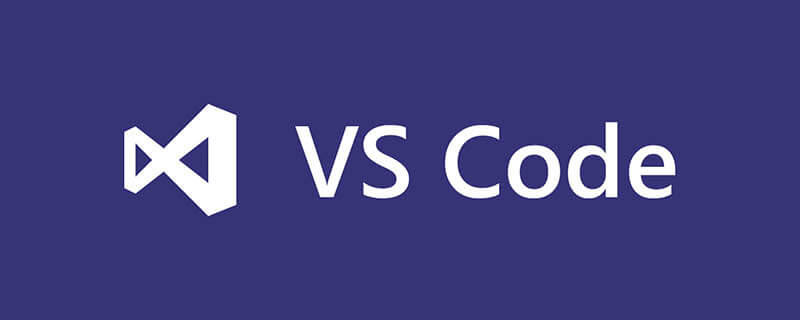 Backend Development
Backend Development C#.Net Tutorial
C#.Net Tutorial What is the difference between declaration and definition of C user identifiers?
What is the difference between declaration and definition of C user identifiers?In C language, the declaration of an identifier declares its existence in the compiler, while the definition gives it a specific value based on the declaration. Declarations can be repeated, while definitions can only occur once and must be in appropriate .c files, usually used in header files, and definitions in .c files.

In C language, the declaration and definition of identifiers are to put it bluntly to tell the compiler the difference between "I know there is such a thing" and "what is this thing". These two sound like each other, but they are actually far apart. If you can't figure this out, no matter how fancy your code is, it is easy to cause trouble.
You think, you have to tell the compiler what tools you plan to use, right? That's what the statement means. It tells the compiler: "Hey, I plan to use a variable called myVariable , it is an integer." But it doesn't say what the specific value of myVariable is. It's like you booked a table but haven't sat down yet.
What is the definition? Only by defining things truly “create”. It not only tells the compiler that myVariable is an integer, but also assigns a value to it, such as myVariable = 10; . This is equivalent to not only booking a table, but also sitting down, and this table is yours now.
Therefore, only the declaration is of type and the definition is of value. Declaration can be made multiple times, and definition can only be made once. You can declare the same variable in multiple places and tell the compiler "I want to use it here too", but you can only define it in one place and assign it the initial value.
Look at the code and you will understand:
<code class="c">// 声明:告诉编译器有个叫myVar的整型变量,但还没赋值extern int myVar; // 定义:创建myVar这个变量,并赋值为5 int myVar = 5; void myFunction() { // 声明:在这个函数里,我也要使用myVar extern int myVar; // 使用myVar myVar = 10; } int main() { // 使用myVar printf("myVar = %d\n", myVar); myFunction(); printf("myVar = %d\n", myVar); return 0; }</code>
In this code, extern int myVar; is a declaration, which tells the compiler that the variable myVar is defined elsewhere, and I want to use it here. And int myVar = 5; is the definition, it creates myVar and assigns values. You can declare the same global variable in multiple .c files, but you can only define it in one .c file. Otherwise, the compiler will go crazy because it doesn't know what myVar is.
Let me remind you again: header files ( .h files) are usually used to declare, not define. Definitions are usually placed in .c files. If you define global variables in a header file and multiple files contain this header file, it will lead to repeated definition errors and the compiler will report errors without mercy. This is a common pitfall! Remember, declarations can be made multiple times, definitions can only be made once, and they should be placed in a suitable .c file. This is the essence of C language and it is also a place where many beginners are prone to make mistakes. You must understand thoroughly in order to write robust and efficient C code.
The above is the detailed content of What is the difference between declaration and definition of C user identifiers?. For more information, please follow other related articles on the PHP Chinese website!
 (超详细)VScode中配置C语言环境的方法Dec 05, 2022 pm 07:05 PM
(超详细)VScode中配置C语言环境的方法Dec 05, 2022 pm 07:05 PMVScode中怎么配置C语言环境?下面本篇文章给大家介绍一下VScode配置C语言环境的方法(超详细),希望对大家有所帮助!
 c语言中node是什么意思Jul 06, 2022 pm 03:51 PM
c语言中node是什么意思Jul 06, 2022 pm 03:51 PM在C语言中,node是用于定义链表结点的名称,通常在数据结构中用作结点的类型名,语法为“struct Node{...};”;结构和类在定义出名称以后,直接用该名称就可以定义对象,C语言中还存在“Node * a”和“Node* &a”。
 c语言怎么将数字转换成字符串Jan 04, 2023 pm 03:20 PM
c语言怎么将数字转换成字符串Jan 04, 2023 pm 03:20 PMc语言将数字转换成字符串的方法:1、ascii码操作,在原数字的基础上加“0x30”,语法“数字+0x30”,会存储数字对应的字符ascii码;2、使用itoa(),可以把整型数转换成字符串,语法“itoa(number1,string,数字);”;3、使用sprintf(),可以能够根据指定的需求,格式化内容,存储至指针指向的字符串。
 c语言开根号运算符是什么Mar 06, 2023 pm 02:39 PM
c语言开根号运算符是什么Mar 06, 2023 pm 02:39 PM在c语言中,没有开根号运算符,开根号使用的是内置函数“sqrt()”,使用语法“sqrt(数值x)”;例如“sqrt(4)”,就是对4进行平方根运算,结果为2。sqrt()是c语言内置的开根号运算函数,其运算结果是函数变量的算术平方根;该函数既不能运算负数值,也不能输出虚数结果。
 c语言数组如何初始化Jan 04, 2023 pm 03:36 PM
c语言数组如何初始化Jan 04, 2023 pm 03:36 PMC语言数组初始化的三种方式:1、在定义时直接赋值,语法“数据类型 arrayName[index] = {值};”;2、利用for循环初始化,语法“for (int i=0;i<3;i++) {arr[i] = i;}”;3、使用memset()函数初始化,语法“memset(arr, 0, sizeof(int) * 3)”。
 c语言合法标识符的要求是什么Aug 27, 2020 pm 01:47 PM
c语言合法标识符的要求是什么Aug 27, 2020 pm 01:47 PMc语言合法标识符的要求是:1、标识符只能由字母(A~Z, a~z)、数字(0~9)和下划线(_)组成;2、第一个字符必须是字母或下划线,不能是数字;3、标识符中的大小写字母是有区别的,代表不同含义;4、标识符不能是关键字。
 c语言中源文件编译后生成什么文件Nov 23, 2022 pm 07:44 PM
c语言中源文件编译后生成什么文件Nov 23, 2022 pm 07:44 PMc语言编译后生成“.OBJ”的二进制文件(目标文件)。在C语言中,源程序(.c文件)经过编译程序编译之后,会生成一个后缀为“.OBJ”的二进制文件(称为目标文件);最后还要由称为“连接程序”(Link)的软件,把此“.OBJ”文件与c语言提供的各种库函数连接在一起,生成一个后缀“.EXE”的可执行文件。
 c语言可以处理的文件类型是什么Sep 19, 2022 pm 03:53 PM
c语言可以处理的文件类型是什么Sep 19, 2022 pm 03:53 PMc语言可以处理的文件类型是:文本文件和二进制文件。C语言所能够处理文件是按照存放形式分为文本文件和二进制文件:1、文本文件存储的是一个ASCII码,文件的内容可以直接进行输入输出;2、二进制文件直接将字符存储,不能将二进制文件的内容直接输出到屏幕上。


Hot AI Tools

Undresser.AI Undress
AI-powered app for creating realistic nude photos

AI Clothes Remover
Online AI tool for removing clothes from photos.

Undress AI Tool
Undress images for free

Clothoff.io
AI clothes remover

AI Hentai Generator
Generate AI Hentai for free.

Hot Article

Hot Tools

MinGW - Minimalist GNU for Windows
This project is in the process of being migrated to osdn.net/projects/mingw, you can continue to follow us there. MinGW: A native Windows port of the GNU Compiler Collection (GCC), freely distributable import libraries and header files for building native Windows applications; includes extensions to the MSVC runtime to support C99 functionality. All MinGW software can run on 64-bit Windows platforms.

Dreamweaver Mac version
Visual web development tools

Safe Exam Browser
Safe Exam Browser is a secure browser environment for taking online exams securely. This software turns any computer into a secure workstation. It controls access to any utility and prevents students from using unauthorized resources.

SublimeText3 Mac version
God-level code editing software (SublimeText3)

Notepad++7.3.1
Easy-to-use and free code editor




